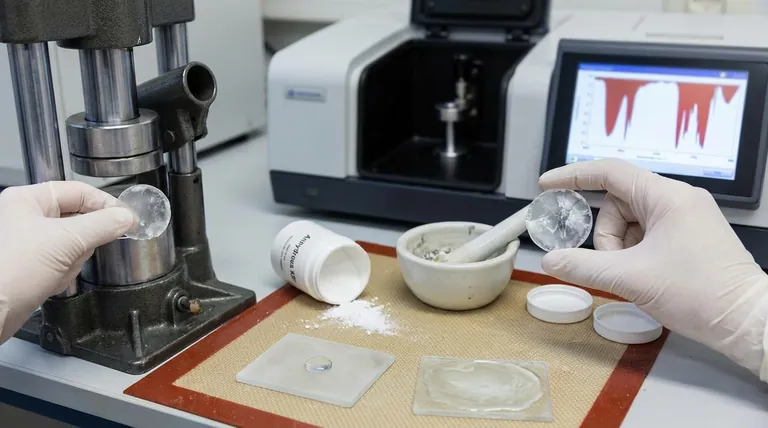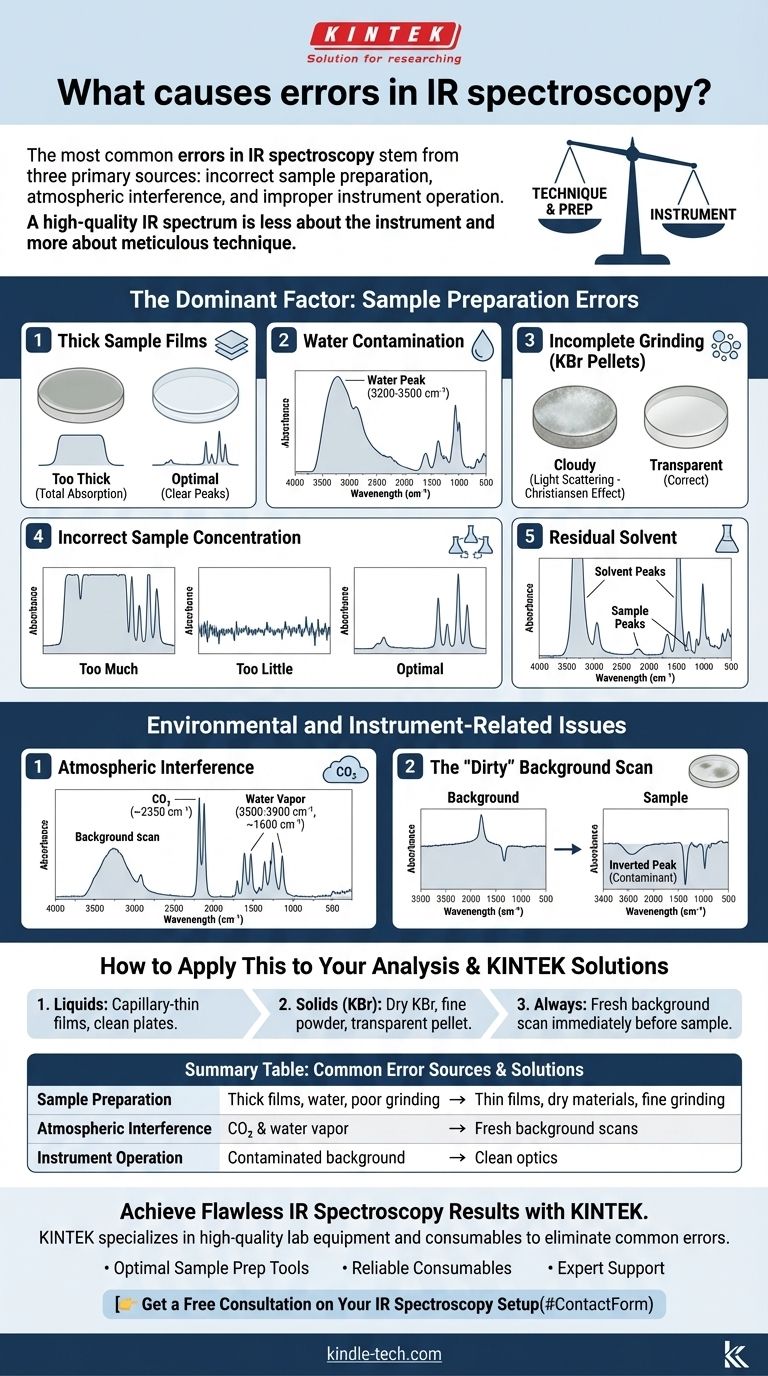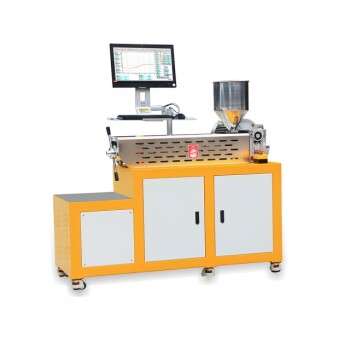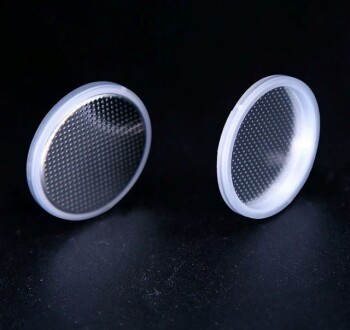Наиболее распространенные ошибки в ИК-спектроскопии возникают из трех основных источников: неправильная подготовка образца, атмосферные помехи от углекислого газа и воды, а также неправильная эксплуатация прибора, например, выполнение сканирования загрязненного фона. Эти факторы гораздо чаще приводят к получению плохого результата, чем фактическая неисправность самого спектрометра.
Основной принцип, который необходимо понять, заключается в том, что высококачественный ИК-спектр зависит не столько от прибора, сколько от тщательной техники. Почти все распространенные ошибки можно предотвратить, освоив подготовку и обработку образца еще до того, как вы нажмете кнопку «сканировать».

Доминирующий фактор: ошибки при подготовке образца
Способ введения образца в прибор является самым большим источником ошибок. Неправильно подготовленный образец даст спектр, который будет вводить в заблуждение или будет полностью неинтерпретируемым, независимо от того, насколько совершенен спектрометр.
Толстые пленки образца
Если вы анализируете жидкость или растворенное твердое вещество между солевыми пластинами, пленка образца должна быть чрезвычайно тонкой.
Слишком толстый образец вызовет полное поглощение ИК-луча на определенных частотах. Это приводит к широким, плоским пикам, достигающим 0% пропускания, что делает невозможным определение истинной формы или положения пика.
Загрязнение водой
Вода является очень сильным поглотителем ИК-излучения и распространенным загрязнителем. Она может присутствовать в вашем образце, в растворителях или поглощаться гигроскопичными материалами, такими как KBr.
Это загрязнение проявляется в виде очень широкого, заметного пика в диапазоне 3200-3500 см⁻¹, который может легко маскировать фактические сигналы растяжения O-H или N-H от вашего образца. Всегда используйте сухие растворители и материалы.
Неполное измельчение (таблетки KBr)
При подготовке твердого образца в таблетке из бромида калия (KBr) образец должен быть измельчен до мелкого, однородного порошка.
Если частицы слишком велики, они будут рассеивать ИК-свет вместо того, чтобы поглощать его. Это явление, известное как эффект Кристенсена, вызывает искаженную, наклонную базовую линию и может сделать тонкие пики неразличимыми.
Неправильная концентрация образца
Слишком большое количество образца приводит к насыщенным, плоским пикам, упомянутым ранее.
И наоборот, слишком малое количество образца даст спектр с очень слабыми сигналами и низким отношением сигнал/шум. Полученные пики может быть трудно отличить от шума базовой линии.
Остаточный растворитель
Если твердый образец был растворен в растворителе и не был полностью высушен, растворитель появится в спектре.
Сильные пики растворителя (например, ацетона или этанола) могут легко перекрывать пики вашего фактического образца, что приводит к неверным интерпретациям.
Проблемы, связанные с окружающей средой и приборами
Даже при идеально подготовленном образце ваши результаты могут быть скомпрометированы окружающей средой в лаборатории или простыми операционными ошибками.
Атмосферные помехи
Воздух в кюветном отделении содержит как углекислый газ (CO₂), так и водяной пар, которые поглощают ИК-излучение.
CO₂ проявляется в виде характерного резкого, сильного дублетного пика около 2350 см⁻¹. Водяной пар проявляется в виде серии множества резких, слабых вращательных линий, в основном от 3500-3900 см⁻¹ и около 1600 см⁻¹.
«Грязное» фоновое сканирование
ИК-спектрометр работает путем сравнения сканирования образца с фоновым сканированием (пустого прибора).
Если ваше фоновое сканирование было выполнено, когда на солевых пластинах или кристалле НПВО были загрязнения (например, остатки растворителя), эти загрязнения появятся в виде инвертированных или отрицательных пиков в вашем конечном спектре образца. Это явный признак плохого фона.
Как применить это к вашему анализу
Освоение ИК-спектроскопии заключается в разработке систематического и чистого рабочего процесса. Прибор точен, но он будет точно измерять любые ошибки, которые вы вносите.
- Если ваша основная задача — анализ жидкостей: Убедитесь, что ваш образец образует почти невидимую, капиллярно-тонкую пленку между чистыми солевыми пластинами; слишком большое количество образца — самая распространенная причина сбоев.
- Если ваша основная задача — анализ твердых веществ с KBr: Используйте сухой KBr, измельчайте образец и KBr вместе до состояния муки, и убедитесь, что ваша таблетка прозрачна, а не мутна.
- Для любого анализа: Всегда выполняйте свежее фоновое сканирование непосредственно перед образцом, чтобы точно вычесть атмосферный CO₂ и водяной пар.
Относясь к подготовке образцов с такой же тщательностью, как и к интерпретации спектров, вы будете постоянно получать чистые, надежные и точные результаты.
Сводная таблица:
| Распространенный источник ошибок | Ключевая проблема | Как избежать |
|---|---|---|
| Подготовка образца | Толстые пленки, загрязнение водой, плохое измельчение | Используйте тонкие пленки, сухие материалы, мелкое измельчение |
| Атмосферные помехи | Пики CO₂ (~2350 см⁻¹) и водяного пара | Выполняйте свежие фоновые сканирования |
| Работа прибора | Загрязненное фоновое сканирование | Очищайте оптику перед измерением фона |
Добейтесь безупречных результатов ИК-спектроскопии с KINTEK
Сталкиваетесь с непоследовательными ИК-спектрами? Проблема часто заключается в технике, а не в вашем приборе. KINTEK специализируется на предоставлении высококачественного лабораторного оборудования и расходных материалов, необходимых для устранения распространенных ошибок.
Мы поставляем:
- Оптимальные инструменты для подготовки образцов: Прецизионные прессы для KBr, прочные солевые пластины и оборудование для измельчения для идеальных таблеток и пленок.
- Надежные расходные материалы: Безводный KBr, сухие растворители и чистящие материалы для предотвращения загрязнения.
- Экспертная поддержка: Руководство по лучшим практикам обработки образцов и эксплуатации приборов.
Перестаньте гадать и начните производить данные, пригодные для публикации. Свяжитесь с нашими экспертами сегодня, чтобы обсудить ваши конкретные лабораторные потребности, и позвольте нам помочь вам оптимизировать ваш рабочий процесс ИК.
👉 Получите бесплатную консультацию по вашей установке ИК-спектроскопии
Визуальное руководство

Связанные товары
- Лабораторные сита и просеивающие машины
- Оборудование системы HFCVD для нанесения наноалмазного покрытия на волочильные фильеры
- Лабораторный стерилизатор Автоклав Вертикальный паровой стерилизатор под давлением для жидкокристаллических дисплеев Автоматический тип
- Двусторонне просветленная германиевая линза Ge для инфракрасной тепловизионной термометрии
- Лабораторный стерилизатор Автоклав Импульсный вакуумный подъемный стерилизатор
Люди также спрашивают
- Каковы этапы метода просеивания? Руководство по точному разделению частиц по размеру
- Каковы преимущества и недостатки метода просеивания? Руководство по надежному и экономичному определению размера частиц
- Каковы стандартные испытательные сита для ASTM? Обеспечьте точность с ситами, соответствующими ASTM E11
- Какое оборудование используется для ситового анализа? Постройте надежную систему определения размера частиц
- Какое оборудование используется для сит при проведении ситового анализа? Достижение точного анализа размера частиц



















